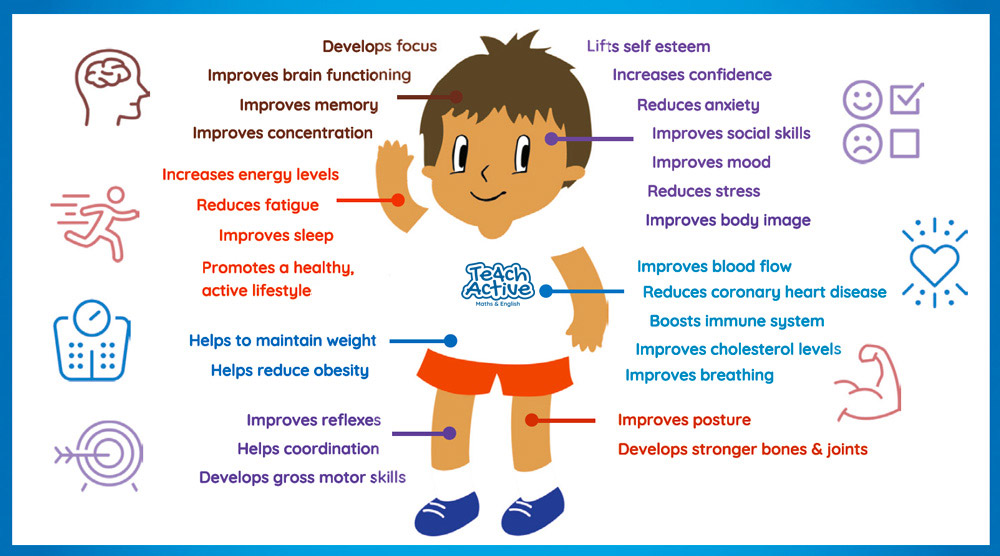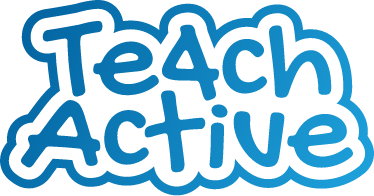As a teacher, we look for that hook that can really support a child – and for Liam that hook was physical activity. Teaching certain aspects of the maths curriculum through physical activity allowed Liam to enjoy maths again, provided an environment where maths was non-threatening and allowed him to begin to succeed.
For Liam it worked. Liam was transformed and a child who hated maths suddenly realised ‘I can do it’ – and as confidence grew, so did attainment, and Liam left Year 6 with a well deserved ‘level 4’ (remember those!) and, more importantly, a love of a subject that months before he had hated. Every time I tell this story to teachers, it resonates with them and they all recognise a Liam who they teach or have taught in the past.
Fast forward to present day and I now have the honour and privilege to head up Teach Active and lead a team who are as equally passionate about the benefits of physical activity as me. Teach Active has developed from a file of ideas to an online resource and has grown from supporting a boy named Liam to supporting over 300,000 children on a weekly basis.
Benefits of Active Learning
Increased Levels of Physical Activity
We read so many negative articles about obesity levels and overweight children so, of course, this is a huge reason why schools are being asked to get children more active. We can’t ignore obesity levels, sedentary behaviour and the alarming facts linking physical inactivity to health problems in later life. However, teachers will never tell children they must exercise because they are overweight or obese – what we love to focus on are the positives that physical activity can bring.
If you are a teacher reading this – ask your class what the benefits of physical activity are. I wonder how many they will list. Do your children know that physical activity, as well as helping them to stay fit and healthy, will also help their memory, concentration and focus? Do they know it will help them to be more productive in the school day? Sleep better? Have more energy? What other subjects can we say all this about?

As teachers we enter the profession because we want to help pupils achieve their full potential. Of course, grades, levels, targets and achievement in core subjects are vital for our children, but what use is a grade 8 if you are not mentally, emotionally and physically healthy? Schools do a marvellous job and teachers tell me what they are doing in their school to get children active. I love to hear of all of their ideas and their curriculum developments. But perhaps we need to look away from ‘What more can we do?’ to an attitude of ‘How can we do things differently’?
This is where my passion for active learning comes in. Why stop a sedentary lesson for five minutes of wake and shake-up when there is an opportunity to make the lesson more active in the first place? Rather than have a sedentary maths or English lesson with a break to dance behind our chairs, why not incorporate activity into the lesson. This movement will have purpose, will be fun and engaging and will support learning – and, importantly, such movement is sustainable.
Attitudes – Children Love It!
Teachers work tirelessly to plan engaging lessons for their pupils. They want to see children enjoying learning and, done correctly, children are more likely to remember the learning experience and retain the information taught. Introducing active maths or English lessons will certainly engage your children. They will love this way of learning. I know this from my teaching experiences – as will many of you.
Of course, most teachers have delivered active maths or English lessons. Many have set up maths orienteering during a health week or National School Sport Week and seen how much children enjoyed such active and fun (yet purposeful) activity. But what if we introduced it weekly and made it a staple diet of our weekly planning?
Attainment
Does active learning mean we lose the focus on our lesson outcomes and objectives? Absolutely not! Teachers are fantastic – trust them and allow them to incorporate physical activity into their maths and English lessons. Teachers know what works for their children and they can link that knowledge and expertise into this way of teaching and learning. Schools we have worked with across the UK and Internationally report on the impact this has had. We have completed test and learn studies with whole schools, intervention groups, transition, early years, boys and girls, pupils with special educational needs and disabilities (SEND) – and are seeing more than ever the impact that active learning has on children.
Research shows that, for a good source of advice and guidance, schools often look to other schools. That is why we are so proud of the recommendations coming from head teachers and teachers who are ‘on the shop floor’ and able to state the difference active learning makes on a day-to-day basis.
Summary
Incorporating physical activity into maths and English lessons will ensure your school day – and your children – are more active. Importantly, it will also be welcomed and enjoyed by children and help them to achieve. Why wouldn’t we do it?
